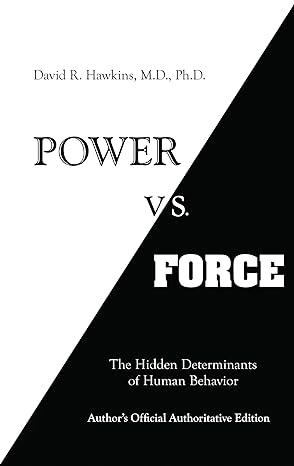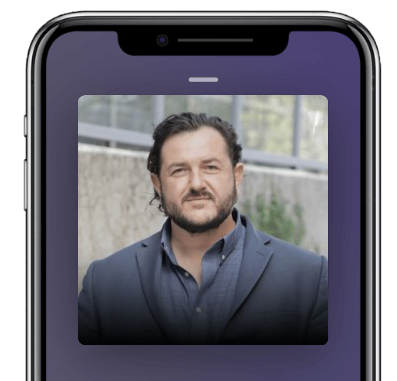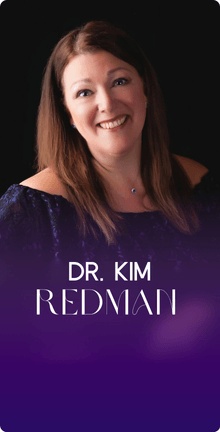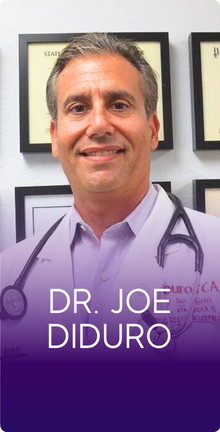In this Episode
- [02:22]Stephan welcomes Ian Mitchell as they talk about quantum entanglement and biohacking.
- [07:09]Ian emphasizes the importance of vitamin D supplementation, suggesting a daily intake of 10,000 IU, and recommends magnesium glycinate and vitamin C.
- [22:22]Stephan and Ian discuss quantum entanglement and its potential impact on human consciousness.
- [29:36]Ian discusses the idea of temporally gated perception and the possibility of seeing into the future through the use of psychedelics or shamanic practices
- [34:22]Ian shares the impact of intention and focus on the world around us, citing examples of how our thoughts and actions can affect others and the universe.
- [38:52]Ian describes his meditation journey and experiences a persistent state of awareness that connects him to everything and everyone without the need for external validation or interaction.
- [46:53]Here’s how to learn more and connect with Ian Mitchell.
It’s good to talk to you again, man. I’m happy to be here. Thank you.
You have such a storied past, and your bio is so diverse. Is there anything you don’t do? Are you also a brain surgeon or what? What did you leave out?
I don’t think anyone would want me doing brain surgery. Maybe rocket surgery, but probably not brain surgery. One of my favorite phrases is, “It’s not rocket surgery.”
You’re right, though. It’s funny. I was telling you just right before we started recording. I was down in one of the other bays of the lab, where we had all the industrial equipment, metal lathes, and machine shop stuff. We’re doing a conversion on my old ‘69 Chevy pickup, so we’ve converted it to run on a system with hydrogen and gas as a mixture. We’re getting it up and on the road and running it today. I’m very excited.
How many miles per gallon?
I am shooting for just over 200.
Is that all? You’re the underachiever here, man.
Most things in this universe work with resonance and frequency differently than they do.
The sad bit is I’m just trying to do it in a slightly more environmentally sound way, but technology like that has been around for a while. Just moderate tweaks to the carburetor can give you 75 miles to the gallon, and changes to the vaporization of the fuel to volumize it before it goes into the carb can greatly enhance things.
Shell oil company had an internal competition back in the early 70s and did that. Their engineers got over 370 miles to the gallon using a 1959 Opel station wagon, if memory serves, which is not like some super light carbon fiber car. It’s like the picture of a car you’d see in the far-side cartoons. I mean, it’s an old, clunky, heavy steel beast.
Doing over 370 miles per gallon in the early 70s changed the paradigm of what we should be shooting for now. Two hundred sounds cool, but I’m just getting my feet wet.
You’re still underperforming.
It’s getting my feet wet. Electrolysis is a weird thing where you start breaking down water. You add an electrolyte solution, like potassium hydride, which is what I use today. You break it down, and it’s usually very inefficient. But I’m finding that if you pulse things at certain frequencies, you can make the molecules disassociate far more easily than you normally would.
It’s a combination of resonance, which is one of the things that I always come back to because, shockingly, most things in this particular universe seem to work with resonance and frequency very differently than they do otherwise.
For anybody who thinks that that’s a strange question or concept, look at the Tacoma Fall Narrows Bridge video. With a light hum of the wind at the right resonant frequency, it rips a steel suspension bridge apart with concrete. That was just a slow wind at the right resonant harmonic. This is the same thing but on a much smaller scale.
Somebody who does not understand the science behind harnessing hydrogen, what do you tell them when they bring up the Hindenburg?
That I am not definitely following in that camp. That’s one of the things when you’re setting up a system like this after the electrolysis, and you put it through a spark gap so it goes into a bubble tank where it goes down so that if anything ignites—because obviously, the combustion is quick with hydrogen; the reaction times faster than the gasoline—there’s a chance that you can have a spark back and it flashes. So, you kind of have it sequestered so that if it blows up, it blows up just a little bit—petite Hindenburg. That’s okay.
Microscopic Hindenburg.
One-to-one scale recreation of the Hindenburg—bad idea.
I don’t want to scare our listener away who’s not super scientific, so let’s talk about the meat and potatoes where science meets their medicine cabinet or their kitchen, and things like C60, different kinds of supplementation they might want to incorporate into their diet, into their daily regimen. What are some things they probably haven’t heard of but will blow them away or change their lives if they implement it?
Well, the biggies that I kind of feel it’s sort of incumbent upon me to beat the drum on, even if they have heard about it, is everybody in our culture should be sucking down vitamin D at a much higher rate than they normally consume it.
Everybody in our culture should be sucking down vitamin D at a much higher rate than they normally consume it.
I personally do 10,000 IUs of vitamin D a day, then magnesium glycinate because it’s a good one. There are a couple of different magnesium blends that are good, but glycinate works well for me. Then, a lot of vitamin C. I do at a minimum of 3–4 grams every day, sometimes 7 or 8. I usually do it in a liposomal form. I think those are the basics.
Then, because of all the things happening to us in the environment, my big go-to, literally in my drawer, is this stuff, which I make: the Olympic serum. Then, the other drawer, which I’ve already downed a ton of today, is my Neural serum.
Those are basically mitochondrial enhancers. It’s my theory that I think in the next 15 years, people are probably going to come to the realization, even more so than they have so far, that a lot of diseases are mitochondrial errors.
You’ve got something like 15,000 or 16,569 different genes in the mitochondria. It’s interesting because that was exogenous. We brought an archaic bacteria into our cells and combined to form this symbiotic relationship. You have something with this separate bacterial system inside your cells.
I think what’s going to happen is over the next 10–15 years, people are going to realize that if you have mitochondrial errors, well, then the way the mitochondria stops processing things is it changes the voltage on the outside of the outer membrane of the mitochondria and it allows spillage. It allows bacterial DNA to come out.
When that hits the inside of your cell, your body reacts to it thinking that it has some bacterial infection because it has exogenous bacterial DNA, so it triggers an autoimmune response. You end up with a cytokine issue where you have all this “inflamm-aging,” which is the term that I hear bandied about a lot. I think that’s pretty accurate. We’re going to find that a lot of the things that are really difficult issues that we contend with aren’t multiple things. They’re just one thing.
The way the mitochondria stops processing things is that it changes the voltage on the outside of the outer membrane of the mitochondria, and it allows spillage, bacterial DNA, to come out.
It’s like the guys who talk about aging as the worst disease. I’m inclined to think that’s true. A lot of things like cancer, Alzheimer’s, Parkinson’s, and a lot of neural degenerative diseases all have the same root cause.
A lot of the physical impairments are going to snap to you that the primary driver in autoimmune conditions is mitochondrial dysregulation. And so, I work on that.
It’s that Henry David Thoreau quote that, “There are a thousand hacking at the branches of evil to one who is striking at the root.” I just want to ensure I’m the cat hacking at the root. And I could be totally wrong. I’ve had pretty success with things so far in ameliorating a lot of diseases that other people don’t seem to be able to do, and that could just be chance, or it could be that the supposition where we’ve been looking is not exactly where things lie.
There’s a really good doctor named Douglas Wallace who does a lot of research on mitochondria and points out that there are some paradigm issues with a lot of medicine. I think that’s actually true. People think they have the anatomical paradigm, as he puts it, where people look at a body and say, “Structurally, this is off.”
Sure, that may, in fact, be the case, but there are a lot of corpses that are structurally perfect, but they have an energetic issue, not a structural issue. You go down in degrees of gradation.
You know the guys at Leela Quantum. I’m the Chief Science Advisor at Leela Quantum. I work on that stuff, take a considerable amount of my time, and donate it to that particular thing because I believe that when you affect changes at the fundamental levels, it sends a cascading signal, the ripple gets larger and larger as it propagates, and it’s more impactful.
If I can go back from the outside and say, “Oh, it’s structural.” Then I go down, and I go, “Well, actually, it seems biochemical.” Then I go down and say, “Oh, well, it actually looks like it’s a molecular interaction.” I go below that and say, “Oh, it’s actually because of electrons.” Then I look lower than that and go, “Well, maybe it’s subatomic.” Then I go lower and go, “Well, it turns out there appears to be some quantum fluctuation that we haven’t dialed in on yet.”
I focus a lot on that because I can see outcroppings of those things that don’t make sense with the normal paradigm that I was taught and that I used to teach. The standard is like, “Oh, it’s all biochemical interaction.” Well, not really.
The primary underlying factor of many physical impairments and autoimmune conditions often lies in mitochondrial dysregulation. Share on XI did a thing on stage a while back—and I’m sure you’ve seen the video because it’s online—where I took someone who had a horrible shellfish allergy, brought them on stage, and opened up a can of crab meat. I derma rolled their arm to mimic an allergist dermal stamp test so it does micro punctures in their tissue, and then I put crab juice in from the crab meat can. Of course, they had an instant histamine reaction, got welts on their arm, everything blew up, and you could see the redness.
I hope you got a waiver signed by them first.
Humorously, on that note, when I called the fellow, Philipp Samor von Holtzendorff-Fehling, the CEO of Leela Quantum, said, “Hey, we’re doing this conference, and a lot of people are having a hard time believing that this is real. Could you do a demonstration in real time that will show people that this actually has merit?” I said, “Oh yeah, I think I got something for that.”
I called my friend Todd and said, “Hey, I want to do this experiment on stage. I know you have this really horrible reaction to shellfish, specifically crab meat. Could we take some crab juice and use that?” He goes, “Do you want me to put it in my eye?” He’s one of the kindest and most trusting people you will ever meet. I said, “No, man, I definitely don’t want you to do that.”
No, I just want to microneedle you with it. That sounds so much better.
Yeah, well, actually, it probably doesn’t sound so great. “Sure. I’m going to punch a hundred little bitty holes in your arm.” But we got on stage, and Todd was great with it. I derma rolled his arm, and he got that histamine reaction.

Then I put the stuff in a quantum block, which, for people who don’t know, is just a series of metal plates. There is no electricity or magnetism, but it affects quantum flux. That seems like a strange concept to a lot of people.
I just asked everyone in the crowd and said, “In your mind’s eye, just picture a waveform. I’ll give you a second.” Then, as is always the case, they said, “Let me guess, you thought of something like this,” because that’s actually a representation that people are taught.
What I’ve experienced and found, and it’s always been there, is just me scratching through the layers of the disinformation campaign we have unwittingly played on ourselves over time. We keep getting little pieces of the puzzle, but not seemingly all of it. It’s not like a waveform like that. It’s not some little 2D representation.
I found that its spheres are undulating with a particular chirality, spin, pressure gradient, tone, and color. There’s how much of the ecliptic changes in the orbital rotation and the axial revolution. There are all these different components to it that you look at and go, “There’s like 20 different things that I need to utilize to define what something actually is in terms of a waveform.” And we just go, “Ah, it’s the frequency. That’s the amplitude.” There are not a whole lot of descriptors, so I’m trying to modulate things at a more fundamental level and take into account a few of those things.
When you affect changes at the fundamental level, it sends a cascading signal; the ripple gets larger and larger as it propagates and is more impactful.
What happened in this case is I just left the can of crab juice in the block for about three minutes. I took it out, derma rolled his other arm with a new derma roller, then put the crab juice in, and nothing happened. He just had the redness from being derma rolled, but there was no histamine reaction. Literally, everyone went “ruff” like a dog that heard me sound because it was so in stark contrast to what we normally see.
If you have an allergy, you don’t suddenly lose your allergy three minutes later, but in truth, you think of yourself as solid. My desk expresses solidity. We express solidity, but in reality, we’re really not that solid. Einstein nailed it. He said, “Reality is merely an illusion, albeit a very persistent one.” We really are like 99.9999% space.
If you think of everything in terms of interactive waveforms, some things have constructive interference patterns, and some things have destructive interference patterns. If you have something that reacts with your own physiology, what you’re actually experiencing in my best assessment at this point is a destructive interference pattern where the waveforms clash. Those clashing points cascade up, and they trigger something biochemically to happen. Then, that’s expressed as a histamine reaction.
I was simply modulating the waveforms to make them more conducive to working with that fellow’s specific physiology. The net effect was you have a histamine reaction and allergy in one second, and three minutes later, you don’t.
Even if I’m completely off base about everything, in my opinion as a scientist, it’s incumbent upon you when you see something completely in stark contrast and weird and expressing wildly anomalous behavior, and you don’t go, “Well, that’s aberrant. I’m just not going to pay attention to it.”
It’s like statistics. You just rule out the top and the bottom of it. But I don’t think that’s how science is supposed to work. I think we’re supposed to be agnostic enough about things to go right. “I’ve dropped the ball a thousand times, 999, it hit the ground, but that one time, it just stayed there, hovering in the air.” We’ll pay attention to that, right? Something is strange. That’s what we’re supposed to look at. We’re not supposed to go, “Statistically speaking, it hit the ground about 100% of the time. So call it good.”
I think we’re really supposed to find that thread and go, “How the hell does that work? What is that?” And just keep pulling that thing until we get some idea. That’s how things move forward.
Reality is merely an illusion, albeit a very persistent one. – Albert Einstein
Not to digress too far from your original point of what’s in the cupboard that helps you, but just to give people a context wherein they can see the mindset behind looking at these things. Because if you say, “Oh, I’m going to take a nanoparticle, and I’m going to bind it to a lipid—just a fat, and then I’m going to use that to punch in through your cell membranes and wedge in the interstitial space in between your mitochondrial membranes and the inner and outer membranes.”
Why would a person spend as much time working on that as I have? Because it gets results. I’ve seen it help a lot of people. I don’t fully understand the mechanisms and the way my crazy ADD, ADHD, and slightly OCD brain is wired. Until I really understand something, I generally don’t put it down. I really want to understand the mechanisms whereby this actually affects so much change.
It seems obvious to me, after looking at ATP output levels and cytokine levels, that when you modulate mitochondrial function, you get this huge leverage and can knock out a host of diseases and pathologies that you normally wouldn’t be able to.
I think, unfortunately, we’ve done a really poor job in Western medicine of actually addressing that. I think a lot of that is financially motivated like things in a biological sense work better with holistic preparations that approach things across multiple facets. But it’s hard to patent that.
What drives drug development? Patentability and profit. It’s really not a system geared towards helping people based on the people. It’s helping people’s bottom line based on profits. Granted, I’m not a billionaire. I might be if I took a slightly different approach to this, but it’s not really what’s driving me.
I’m big into the puzzle and trying to figure out what’s happening and going on, which excites me. I get up really early, and I work really late because I love this stuff. I still get jazzed by the fact that I actually get paid to show up to a weird lab, do basically what is mad science, and try to figure out lots of puzzles across a whole host of different domains. It’s awesome.

A quote that came to me when we were talking is from Arthur C. Clarke, “Any sufficiently advanced technology is indistinguishable from magic.”
That is so very true. A lot of times, some of the things that I do as demonstrations, people think it’s some sleight of hand wackadoo. I’m not that skilled.
Misdirection.
“Look over here.” I’m not nearly that skilled. A lot of times, I don’t understand it myself. That’s why I’m playing with it. I’m very diligently grasping at the straws of my understanding, trying to catch on to whatever I can.
I met somebody years ago who has fascinated me. He was allergic to bananas, but somehow, he accidentally ate some organic bananas, and he didn’t get a reaction. I’d be curious if this guy would take the banana that is not organic, which he would have a reaction against. He has a severe reaction, like it’s not something to be played with on stage or anything, but to put that in the quantum block or the infinity block from Leela, let the quantum energy transform, transmute it, and then consume it and see if he has a reaction. I have a feeling that he would be non-reactive to that, just like he was non-reactive to organic bananas.
Yeah, and there’s also a high likelihood he might have a problem with the ripening agents they use on normal bananas. That is the first place I would look at the sulfur derivatives and the gas they use to ripen the bananas and make them yellow when they would normally and naturally be green. Many people have issues with that in the same way that many have issues with sulfates in wine and nitrates and things like that.
A whole host of little peripheral things don’t seem to be at the kernel of what people are looking at but are still present and cause many problems. One of the nice things about working with Leela is that tech is very legitimate. We’ve done a lot of double-blind studies, and they’re interesting, but it’s still hard to wrap your brain around.
We did one where we were showing reactions and cell cultures at a distance, and it was double-blinded, and the data was incredibly clear. We experimented with quadruplicate. We experimented three times.
Every time we tried to narrow down any parameters that might be obfuscating what was happening so we could see clearly what was going on, just myself and the other person in the lab doing it, I was the only one who knew which cells were until the very end of the experiment. But when we got the data and looked at it, it was incontrovertible, but it’s just weird. It doesn’t sound like a terribly scientific term to say dying. It’s weird.
Tune into your energies to align with a specific frequency and shape your universal resonance. Share on XThat reminds me of Einstein calling quantum entanglement “spooky action at a distance.”
Exactly. There are times when you see something that is right at the edge of your understanding. Actually, that’s a great point. It’s proven now they were awarded a Nobel Prize for entanglement. It’s a very poorly misunderstood thing, and Einstein didn’t really think it was even possible.
Actually, a research group in Japan, I think 3½ years ago, clocked the speed of entangled particles and the low threshold—they couldn’t get an upper threshold on it—was 100,000 times faster than the speed of light. If you can communicate 100,000 times faster than the speed of light, that’s pretty dang quick. You can cover a fair distance without much lag. It’d make video gaming great—no lag issues.
Again, all these things are you look at. Why is that a focus? The stuff Leela and I do with Wizard Sciences is the same with Satori Neuro. They’re all things where I want to see people helped in a beneficial way. I have an oddball skill set, and I’m probably overly curious, so I utilize my time to try and move the needle, which is what we always say around the lab. Move the needle on things that are actually going to be impactful and make a difference.
The woman in charge of Satori Neuro, Dr. Amy Kruse, was with DARPA, and she’s wonderful, just a fantastic human and very sharp. It’s a pleasure to look at things where the mindset is the same. She’s doing what she’s doing. She’s taking her background in neuroscience and leveraging it so she can find technologies to help people.
I’m 100% behind that, both literally and figuratively. I mean, I love that. I take my time and focus on those things whenever necessary.
You’re doing God’s work in the world. That’s amazing. You’re not just helping people on a physical level or just helping people on a spiritual level because I see what Leela Quantum Tech is doing, which is helping people spiritually. You’re bridging that gap. You’re bridging those two worlds.

One of the things that was really impactful for me and arguably still the best thing I’ve ever read—primarily, I read non-fiction; I consume non-fiction at a freakish pace—but the best thing I’ve ever read of any sort was David R. Hawkins’ Power vs. Force, and it is a profoundly impactful book.
Hawkins was a sharp cat. He’s an MD PhD, but more importantly, I think the parlance would be enlightened, bordering on a saint, if not well past the point of sainthood, which sounds odd to hear a scientist say something like that. But fortunately or unfortunately, science is the new religion. Believe in the science, follow the science.
We’re not supposed to believe, nor are we supposed to follow. The whole point is that we’re inquisitive, and things are fact-based. That’s actually one of the things I love about meditation. I did real heavy-duty meditation for over 30 years, and one of the things I love is that you hear people talk about these strange, mystical things. Some people have those experiences, and some people don’t.
But what I can qualitatively say happens in almost every case with almost any person who does it over a period of years is you develop a sense of peace about things that’s very different. It’s profoundly impactful, and it makes you function more effectively. Personally speaking, it’s made me far sharper. I’m a much smarter guy than I was 30-plus years ago before I started meditating.
The things that I do now, I literally would have laughed at. They seem comic book nature. It’s very superhero-esque in terms of some of the things that I now just take for granted, such as being able to process information at a different rate and having memory retention that’s just freakish and off the charts.
It’s like the Limitless movie.
Actually, yeah, very much so. It is a lot like that. It’s like NZT. This is my version of NZT. It took 30 years and a couple of long meditation sessions a day to pull it off. But at the end of the day, it doesn’t really matter how you get there, whether it’s some nootropic or whether you put in the time.
I was doing neural training with Dr. Drew Pearson. He was a fellow who started 40 Years of Zen. Drew had me hooked up to a 21-channel EEG, and this was about seven weeks ago. I was doing this evoked potential test, and it measures the electrical output of your brain. I was going through this thing; it goes up, adjusts to the level that you’re actually operating at, and then stops.
The day before, I had taken three tablespoons of my neural serum, and it didn’t stop. I had no frame of reference. I didn’t know, but this particular day, the third day of the thing we were doing the intensive, it stopped after it went up one time. I thought, “Well, that’s odd.”
I called Drew over, and I asked him what was going on. He said, “Well, you’ve probably just hit your level and adjusted.” I thought, “That didn’t feel quite right.” I had my bottle and hammered back a couple of tablespoons of the neural. I waited and could feel it digest about 20 minutes in. Then, the evoked potential started going up and didn’t stop. It just kept going up and up.
For me, having the basic toolkit to be able to do those things, even though I’ve worked on it and it’s enhanced, I still find points where I go, “Ah, this is great. I can use this. It’s more effective.” I’m still looking for things like that.
If you choose to live in fear, you deny love’s embrace. Let love be your transcendent, guiding force. Share on XMy go-to nootropic is my neural serum. But if I have something that’s really intense, I’ll augment it with a little bit of methylene blue. Methylene blue is great in terms of mitochondrial output.
Also, if I’m looking for a real super edge, I’ll do this old thing called Sultep, which is a chemically induced long-term potentiator. Basically, it’s an artichoke extract and a couple of other things. It just changes the amount of time that you’re able to keep potentiating things. Then, I’ll combine that with phenylpiracetam. That’s my perfect go-to stack for really intense stuff.
I don’t do it that frequently. I’ve probably literally all done that entire stack maybe seven or eight times, something like that, over the past six or seven years. Just because I don’t want to do something that’s going to potentially reset my threshold at the lower point. But if I need to sprint, it’s like running nitrous through a car. You don’t want to use that as your daily driver.
I took my Ford Fiesta, ramped it up to 700 horsepower, and drove to the convenience store. You’re going to blow your motor, and it’s not going to be so good. Flames are going to be shooting out of the exhaust. I try to do it with a bit of discretion only now and then if I have to do something Herculean, like staying up and writing an entire patent in one night or something like that.
As you normally do every once in a while, right?
Actually, yeah. That’s actually true. That is something I’ve done a couple of times. It’s like, “Oh gosh, I should probably patent this,” so I’ll write a patent overnight.
That’s crazy. That is otherworldly.
You play the cards you’re dealt.
You just happen to be an extraterrestrial.
Nature updates in real-time in a quantum system irrespective of distance.
I was talking to the guys and my staff here the other day. I really do feel like nature is not stupid. In my opinion, I’m very much in the camp that there is a higher order to things, whether you want to call it the universe, God, nature, or whatever. But I don’t think it’s an idiot. Like in the contest, “Who wore it best, humanity or other?” I’m going to go to nature every time.
Nature always wears it best. We have cloud computing. Nature has cloud computing. It does it more effectively. It updates in real-time in a quantum system irrespective of distance.
Spooky action at a distance.
Yeah, Rupert Sheldrake has shown things that are seemingly very anomalous. Google did a series of experiments in working with Sheldrake at one point, where they showed that our experience of reality is temporally gated. We experienced reality, and they were using the camera on the computer to map out pieces, people’s facial muscles, and randomly generated images. They would show it an image that was either disturbing or happy, and people’s facial muscles adjusted an eighth of a second before the image actually came up, which means we’re gating our reality temporally. It doesn’t matter if it’s an eighth of a second or a day.
There are the guys in the Amazon that do a thing called Rapéh. Nicotiana rustica, I think, is the actual tobacco, but it’s a much stronger tobacco than we have here. They grind it down, and then they blow it using a thing called a Kuripe. They blow it into their nostrils and do that 18–20-something times.
It causes this expansive state where they see into the future, and they see where they’re going to hunt the following day. They bring that information back and say, “Okay, tomorrow we’re going to hunt at this particular place.” The ethnobotanist who was down there checking this out 20 or 30 years ago thought that was absolute BS. He was just like, “That’s BS. That can’t possibly happen.” And then he did it.
In his book, he wrote about how you don’t have to believe it, but I will tell you firsthand that this is what I experienced. He described seeing the hunt the following day and exactly where these animals were going to be jumping over a hollowed-out log in the river. Then they said, “Okay, you lead us.” He brought them there, and it played out exactly as it had happened in his vision.

To me, that tells me there are a couple of different possibilities. One is that we are temporarily gated, and we’re holding things at bay in terms of our perception. Two, there’s a very high likelihood that not only are you looking at the future sort of, but you’re more likely, I would think, probably looking at a probabilistic outcome. When you look at that future, there’s an interaction, and you may or may not collapse the waveform.
You go from something where there’s a Heisenberg uncertainty principle at play to where you crush it using Schrodinger equation. You collapse the waveform—pinching it down on one specific reality—and then, that reality manifests over the next series of a day or so. I don’t actually know which way that’s playing, but more likely than not, based on what we’re told, it’s one of those things.
That is very strange, but it doesn’t mean it’s any less real. It just means we’ve got a lot more work to do. Again, I love this stuff because this is where I get to play and try and figure out, like, “Okay, well, how do we take that and use it to help people in some way, shape, or form?”
I can’t tell you how many people are discussing this concept of temporal gating. The number one thing I hear is, “Can you do lottery numbers?” This is hilarious to me because I always think you might be missing the point.
Exactly. It’s like trying to figure out how to cheat at Monopoly so you can get all the hotels.
Right, exactly.
You lost the plot there.
Yeah, that’s it. You need to get back on the plot.
So many things popped up for me while you were talking about all this. One is that I learned this; I can’t remember from whom, but the present moment we witness is actually in the past. I think it was maybe channeled by Sam the Illusionist, who I interviewed on this podcast. He’s got a big following, with more than 100,000 subscribers on YouTube. He’s really cool.
One of the channeling sessions I heard described how what you’re experiencing is in the past. It feels like it’s in the present moment, but it’s in the past. If you want to go into the present moment, you have to shut off all five senses and go inward. Close your eyes, go somewhere quiet, just go inward, and there is the present moment.
I would be inclined to agree with that. That’s my experience. When you shut off sensory input, your awareness does shift.
I think a lot of people, especially in our culture, find distractions to keep themselves from being anything but present because when you’re present in that space in silence, you tend to be introspective and reflect on yourself and what exactly that self is. Then you can see all the little frayed edges of that thing and all the work that needs to be done on that.
When you shut off sensory input, your awareness does shift.
If you actually consistently do that, you realize very quickly that, “Oh, I’m cracked,” and it starts a process where you go, this isn’t probably the best thing. “How do I fix this?”
You start working on yourself and actually putting in—this is just my personal experience—the time to do that. And it takes a bit. I think a lot of people will probably spend quite a lot of their lives in therapy, as that seems to be one of the new things to do.
But I subscribe to the way the guys used to do it a few thousand years ago. Just sit down, be quiet, be still, and allow nature to come in and express its own wisdom on how you need to unfold. I really do think if people do that, and this is one of the reasons, like with David Hawkins’s book, Power vs. Force, if you simply do those sorts of things and you act with kindness, the whole world is a much better place, and it’s impactful.
That’s actually when I lecture on quantum biology, and I cite the studies that we did with Leela. The thing that I am inclined to leave everyone with kind final thoughts is that I’ve conclusively shown that there is an impact on what is happening sub-materially. There’s some interaction between things at a distance.
It’s that spooky action at a distance. We’re all apparently entangled. When you place intention on something, albeit negative, positive, whatever, it doesn’t really matter. It has an impact. I find it really incumbent upon me to tell people things like look, what you think, what you feel, and what you focus on. All of those things propagate a wave.
If you propagate a wave of love and kindness, that’s pretty damn easy to do. It’s really inexpensive. Being kind is a very simple thing. You can push that wave out, and it will impact everything everywhere. That’s how the physics of it works. If you set up a waveform, it propagates, and it propagates infinitely. It may be weak and express a very infinitesimally small impact on something else, but nonetheless, it’s an impact.
If your options are to have your existence based on fear, which is, in my opinion, exclusive of love, then you can do that. But I would posit that eventually, you’ll reach a state where what you’re going to want to do is focus more on love to the exclusion of fear.
Propagating love and kindness is really inexpensive and a simple thing to do.
When you do that, things seem to function more effectively. Your bandwidth increases. Again, God, the universe, nature, it’s not foolish. It doesn’t give toddlers pistols. It’s a self-limiting function.
For me, what I had alluded to a minute ago with my staff was they were asking me about assessing different technologies and making big strides in several domains that seemed disparate. My take is when you’re doing it for the benefit of other people, and you constantly put yourself under a lot of stress, not distress, but eustress, where you believe in what you’re doing and see that there’s a purpose to it, you push harder.
For anybody who doesn’t realize that the intent of what you’re doing makes a huge impact, read Viktor Frankl’s Man’s Search for Meaning. That should be required reading for everyone on the planet. If you think you’re having a rough day, read Viktor Frankl.
It will set things into a relative position where you go, “You know what? My day’s not so bad. I think I’m going to go out and be really nice to people because I can.” His experience frames things, for me at least, because when you see that, your intent really makes a lot of difference.
The guys and in those particular camps that he references in the book, the people who found meaning and purpose, and it didn’t really matter what the meaning or purpose was, whether it was, “I’m going to survive so that this never happens again,” they lived. For me, that’s an impactful thing.
I want to do this stuff so that a lot of people can benefit from it. Who knows? Maybe I will contribute something. Maybe I contribute only that I was nice to the guy when I was getting coffee this morning. So be it. At least, that’s a checkmark on the box. Karmically, I’m feeling pretty good about it.
It’s definitely revealing a light in the world. I’m curious about how your meditation regimen looks. Is it like 15 minutes, twice a day, morning and evening? Is it a transcendental meditation? Is it mindfulness? What are you doing?
It used to be transcendental meditation. That’s where I started. Then I got a mantra from Amma Chi, Mātā Amritānandamayī.

I got one from her, too. Amma the Hugging Saint.
Exactly. I think it was 26 years ago I got my first mantra from Amma. That was great. That was very impactful. It profoundly changed things to have a specificity of that because it’s a waveform. Because you’re trying to propagate a waveform.
When you tune yourself up to something, you’re aligning yourself with a specific frequency, which is a very complex waveform, and that’s what a mantra is, in my opinion. It’s you who align yourself to a particular field that’s expressed through a waveform in this manifest place.
I did that for quite a few decades and then went through a process where I was blown up a little bit more. On the other side of that, I stopped meditating altogether because even though it was my favorite thing to do in the world, I realized that it was just an indulgence at that point. It was like carrying a raft on my head once I was on the other side of the river. There really wasn’t much point in continuing to do that anymore.
Then, I changed it so I would only meditate when I was meditating with other people. If anybody asked or anybody wanted to meditate or learn meditation, then I would meditate. But other than that, I just stopped doing it for myself because there are better uses for that same amount of time. In truth, I don’t need to sit down and do that particular thing anymore to be in that space or elicit those same sorts of feelings.
It’s actually a persistent state, which is in and of itself an interesting thing when your awareness never dips, whether you’re awake, dreaming, or sleeping. I’ve tried extreme things to push it out and see how consistent your awareness can be through strain and stress. It’s surprising beyond a certain threshold, and it appears to have not dissipated or dipped out despite what I’m doing.
It’s amazing. That’s basically like you’re walking one foot in this world and one foot in the ethereal simultaneously throughout your day, not just when you’re meditating.
A mantra is how you align yourself to a particular field that’s expressed through a waveform in this manifest place.
Yeah, that’s the state it ended up in, and it’s a beautiful space. It does make you very acutely aware of the connection between people. Hence, I think when you’re in that state all the time, you don’t meet anybody there, and this sounds odd; you don’t love profoundly.
Right, because everything and everyone is love. It’s all consciousness. There’s nothing that’s not of God. Amazing. It reminds me of how aspen trees can communicate with each other. I don’t know if you know this. Their root system is connected with every other aspen tree in the vicinity, about 40 feet away. It’s like a neural net or something where these trees are all communicating.
So it’s not just telepathic. You can communicate with Mother Nature, with the trees, and so forth. But there’s physical evidence of the communication between trees. One tree in the aspen forest will get injured by an insect, and then all the trees will turn on their defenses throughout the whole forest. It’s amazing.
Nature, I love it. When I was first doing one of the things, it was a variety of muscle testing that I first read about in David Hawkins’s book Power vs. Force with the calibration of things. I diligently worked at that for about six months but could not do it to save my life. Then, there was this breaking point at which it became incredibly accurate.
Interestingly, it was the point at which I no longer cared what the outcome was. I had completely disassociated myself from any regard to whether it was good, bad, right, or wrong. It didn’t matter. It was just a data point.
My daughter asked me. We were talking about consciousness on the planet, and the question came up of what the highest consciousness of something on the planet is. I said, “I had no idea. Let’s find out.” I started doing this calibration thing.
Muscle testing to see what the Hawkins scale score is of what mother nature or humanity or what?
To see what particular individual entity had the highest consciousness on our planet. Oddly enough, it wasn’t an animal, a tree, or a flower. It was a fungus, which was what popped up. I thought that was incredibly odd.
We should all increase our vitamin D consumption to optimize our health. Share on XToe fungus or what?
This is why it pertains to the aspen trees, and this is what made me think of that. When she asked, “Where is it?” I said, “I had no idea. Let’s break the world into quadrants and figure it out.” I did that, and I ended up in North America. Then I broke North America into quadrants and ended up in the U.S., in the Northwest, and then specifically in Oregon and Washington state. I said, “Okay, I have no idea what the hell’s there. Let’s google it.”
Then we went from the broad-scale calibrating things to googling, and there’s this thing that they lovingly term the humongous fungus. It is, I think, a 3500-acre cluster of mushrooms that acts as one giant neural net. If you touch one component on it, there’s a response between the entire 3500 square acres of things that act as one giant organism.
Remarkably, on the Hawkins scale, it was in the 1300s, which is a boggling number for anybody familiar with that. It was just very, very profound to me.
I think, “Wow, this giant thing operates as a neural net, and you can touch it like the aspen trees. You can touch one spot on it, and something on the entire another side of this entire thing knows what just transpired.” It’s just, again, nature, God, and reverence. It’s just beautiful and remarkable.
I was thinking of the Star Trek show, where they had the mycelial network that they were using to get into subspace. Do you know about this? It’s one of the Star Trek shows.
No, I don’t.
The character in the Star Trek: Discovery show was Paul Stamets. It’s named after Paul Stamets, the guy who was the cutting-edge of mushroom science and psychedelics and everything.
Yeah, he’s a great mycologist. I’ve read a ton of his stuff.
I’ve heard him speak before. He’s amazing.
He’s doing really cool work.
It’s so cool. I wish we could go another hour and talk about all the geeky metaphysical stuff, but we got to wrap.
No, it’s fine. We can do it again.
Okay, good. We’ll do part two. Awesome. If our listener/viewer wants to buy your amazing products, the neural serum, which is called Neural Rx, is available at wizardsciences.com. If they want to go to your socials and follow you, and if they want to learn from you, where’s the best place for them to go?
You can go to wizardsciences on Instagram, or you can go to me personally at @ianmitchell1. One of the things I always offer is this, and people take me up on this all the time. If you have something that’s a concern and you reach out to me, I will get back to you. It may take a little while because there’s a litany of people responding. It might be in the middle of the night, three days later or seven days later, but I will get back to you.
Again, I feel like I have an oddball skillset, but it’s just something that’s intended to help people. That’s why I’m here. I am so happy to do what I can do, so just reach out.
Awesome. Well, thank you, Ian. And thank you, listener. We’ll catch up with you in the next episode. I’m your host, Stephan Spencer, signing off.
Important Links
Connect with Ian Mitchell
Books
Businesses/Organizations
Films
People
Previous Get Yourself Optimized Episodes











